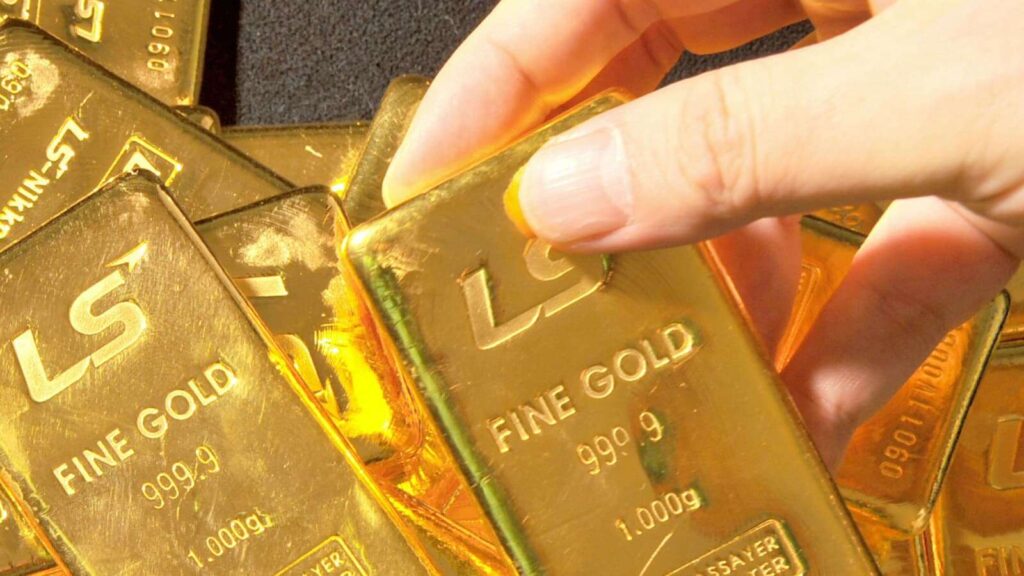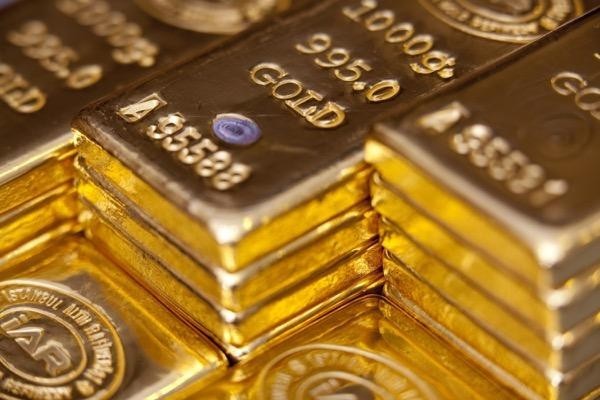قیمت طلای جهانی
نرخ ارز ، نرخ سکه , قیمت دلار





قیمت طلای جهانی: عواملی که تأثیرگذار هستند و تحلیلهای موجود
قیمت طلای جهانی
قیمت جهانی طلا یکی از موضوعات مهم در بازارهای مالی است که تحت تأثیر عوامل مختلف قرار میگیرد. طلا به عنوان یک دارایی امن در نظر گرفته میشود که در زمانهای بحران اقتصادی و مالی، بسیاری از سرمایهگذاران به آن روی میآورند. قیمت طلا در واقع میتواند نشاندهنده وضعیت اقتصادی جهان، میزان تورم، نرخ بهره، و تغییرات در سیاستهای پولی کشورها باشد.
۱. نوسانات قیمت طلا
قیمت طلای جهانی
قیمت طلا بهطور روزانه تغییر میکند و تحت تأثیر عوامل مختلفی از جمله تقاضای بازار، عرضه، سیاستهای پولی دولتها، و بحرانهای جهانی قرار میگیرد. به عنوان مثال، اگر نگرانیهایی در مورد بحران اقتصادی جهانی یا بیثباتی سیاسی در برخی از کشورهای کلیدی مانند آمریکا یا چین ایجاد شود، تمایل سرمایهگذاران به خرید طلا افزایش مییابد و این موضوع باعث افزایش قیمت طلا میشود.
۲. نقش طلا در مقابله با تورم
قیمت طلای جهانی
طلا بهعنوان یک وسیله محافظتی در برابر تورم شناخته میشود. هنگامی که بانکهای مرکزی نرخ بهره را کاهش میدهند یا سیاستهای پولی انبساطی را اجرا میکنند، احتمال افزایش تورم وجود دارد. در این شرایط، طلا بهعنوان یک دارایی فیزیکی که ارزش خود را حفظ میکند، توجه سرمایهگذاران را جلب میکند. به همین دلیل، زمانی که نرخ تورم در حال افزایش است، قیمت طلا معمولاً افزایش مییابد.
۳. عوامل جهانی تأثیرگذار بر قیمت طلا
قیمت طلای جهانی
- نرخ بهره: هنگامی که بانکهای مرکزی مانند فدرال رزرو آمریکا یا بانک مرکزی اروپا نرخ بهره را افزایش میدهند، سرمایهگذاران تمایل دارند که از خرید طلا بهعنوان یک دارایی بیحاصل (در نظر گرفتن نداشتن سود بهره) پرهیز کنند، زیرا در این شرایط سود سرمایهگذاری در اوراق قرضه یا سایر داراییهای با بهره بیشتر جذابتر میشود.
- بحرانهای جهانی: در زمان بحرانهای سیاسی، نظامی یا اقتصادی جهانی، طلا بهعنوان یک پناهگاه امن برای سرمایهگذاران عمل میکند. به عنوان مثال، در زمان بحرانهای مالی ۲۰۰۸ یا بحرانهای سیاسی در برخی از کشورهای خاورمیانه، قیمت طلا بهطور چشمگیری افزایش یافته است.
- عرضه و تقاضا: میزان استخراج طلا از معادن و ذخایر جهانی نیز تأثیر زیادی بر قیمت آن دارد. هرگونه کاهش در عرضه طلا میتواند به افزایش قیمتها منجر شود، بهویژه اگر تقاضا در سطح جهانی بالا باشد.
۴. پیشبینی قیمت طلا
قیمت طلای جهانی
پیشبینی قیمت طلا در بلندمدت بسیار دشوار است زیرا این قیمت تحت تأثیر عوامل زیادی قرار دارد که پیشبینی آنها به راحتی ممکن نیست. با این حال، بسیاری از تحلیلگران و کارشناسان بازارهای مالی به دنبال شناسایی روندهای جهانی و اقتصاد کلان هستند تا بتوانند قیمت طلا را پیشبینی کنند. به طور معمول، در زمانهایی که نگرانیهایی در مورد بحرانهای اقتصادی یا بیثباتیهای جهانی وجود دارد، طلا بهعنوان یک گزینه مطمئن برای سرمایهگذاری در نظر گرفته میشود.
۵. تأثیر سیاستهای اقتصادی بر طلا
قیمت طلای جهانی
سیاستهای اقتصادی کشورها، بهویژه سیاستهای مالی و پولی، تأثیر زیادی بر قیمت طلا دارند. وقتی که دولتها تصمیم به چاپ پول بیشتر برای تأمین کسری بودجه خود میگیرند، این امر میتواند به افزایش تورم و کاهش ارزش پول ملی منجر شود. در این شرایط، طلا بهعنوان یک ابزار پوششی در برابر کاهش ارزش پول و تورم میتواند بسیار مورد توجه قرار گیرد.
نتیجهگیری
قیمت طلای جهانی
قیمت طلا نه تنها به شرایط اقتصادی و تقاضای جهانی بستگی دارد بلکه عوامل سیاسی، بحرانهای اقتصادی و تصمیمات اقتصادی کشورها نیز بر آن تأثیرگذار هستند. در این میان، طلا بهعنوان یک دارایی امن در شرایط عدم اطمینان اقتصادی و جهانی شناخته میشود و در زمانهایی که بازارهای مالی نوسان زیادی دارند، بسیاری از سرمایهگذاران به سمت طلا گرایش پیدا میکنند.
Global Gold Price: Key Factors and Analysis
قیمت طلای جهانی
The price of gold is a key indicator in the global financial market, as it reflects various economic, political, and social factors. Gold has long been seen as a store of value, particularly in times of economic uncertainty. Understanding the price of gold requires an exploration of the major factors influencing its fluctuations, including supply and demand, inflation, geopolitical events, and central bank policies.
۱. Current Price of Gold
قیمت طلای جهانی
As of November 2024, the price of gold is approximately $2,687 per ounce【۲۰†source】. This is a significant figure, reflecting gold’s role as a hedge against inflation and a safe-haven asset in times of financial instability. Prices can fluctuate based on daily trading and long-term economic trends.
۲. Factors Influencing the Price of Gold
Several key elements influence gold prices:
- Inflation: Gold is often seen as a hedge against inflation. When inflation rises, the value of currency declines, and investors turn to gold to protect their wealth. This has historically led to an increase in the price of gold during times of high inflation.
- Interest Rates and Monetary Policy: Central banks, such as the U.S. Federal Reserve, play a significant role in gold pricing. When interest rates are low, the opportunity cost of holding gold (which does not pay interest) decreases, making it more attractive to investors. Conversely, higher interest rates can decrease the demand for gold as investors seek higher returns elsewhere.
- Geopolitical Events and Economic Uncertainty: Gold prices tend to rise during times of geopolitical instability or economic crises. In uncertain times, investors view gold as a safe store of value. For example, in the wake of the 2008 financial crisis, gold prices reached record highs as investors sought refuge from the stock market volatility.
- Supply and Demand: The supply of gold is relatively limited, with mining production unable to keep up with demand in many years. Additionally, increased demand for gold in industries such as technology and jewelry also drives up prices. On the other hand, changes in mining output or the discovery of new gold reserves can impact supply and influence the price.
۳. Gold as a Financial Asset
Gold has long been used as a form of currency and a store of value, and today, it remains one of the most reliable investments during periods of economic turmoil. The perception of gold as a “safe-haven” asset often leads to increased investment demand when global markets face uncertainty.
- Central Banks and Gold Reserves: Central banks hold large amounts of gold as part of their reserves. Their buying and selling actions can significantly affect the gold price. For example, large-scale purchases by countries seeking to diversify their reserves can lead to higher demand and, consequently, higher prices.
- Gold ETFs and Futures Markets: In recent years, exchange-traded funds (ETFs) and futures contracts have become popular ways for investors to gain exposure to gold without holding physical gold. These financial products can influence gold prices by increasing or decreasing demand in the market.
۴. Future Outlook
The price of gold is expected to remain volatile, influenced by global economic trends, inflation expectations, and geopolitical risks. Analysts often predict that gold will continue to be a strong investment choice in the face of economic uncertainty, as it has historically performed well during times of crisis.
Analysts also forecast that the price of gold could rise further if inflationary pressures persist or if central banks continue with low-interest-rate policies. Conversely, if the global economy stabilizes and interest rates rise significantly, the price of gold could face downward pressure.
Conclusion
The global price of gold is influenced by a complex mix of factors, including inflation, interest rates, geopolitical stability, and the supply and demand for the metal. With its role as a hedge against economic uncertainty and a reliable store of value, gold remains one of the most important assets in global financial markets. As of late 2024, the price of gold reflects the ongoing uncertainty in the global economy, positioning it as a key asset for both investors and central banks.





















